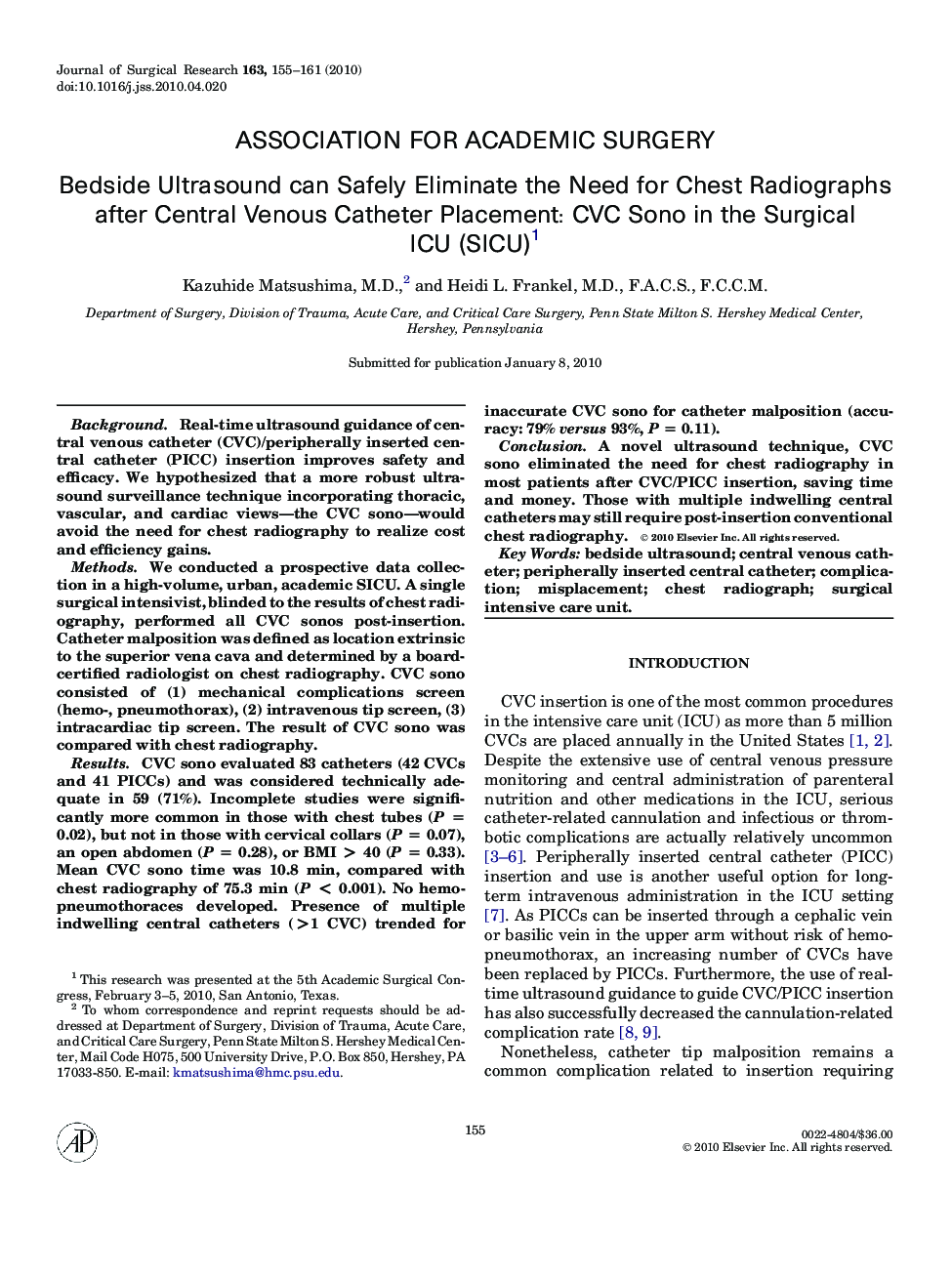| Article ID | Journal | Published Year | Pages | File Type |
|---|---|---|---|---|
| 4303087 | Journal of Surgical Research | 2010 | 7 Pages |
BackgroundReal-time ultrasound guidance of central venous catheter (CVC)/peripherally inserted central catheter (PICC) insertion improves safety and efficacy. We hypothesized that a more robust ultrasound surveillance technique incorporating thoracic, vascular, and cardiac views—the CVC sono—would avoid the need for chest radiography to realize cost and efficiency gains.MethodsWe conducted a prospective data collection in a high-volume, urban, academic SICU. A single surgical intensivist, blinded to the results of chest radiography, performed all CVC sonos post-insertion. Catheter malposition was defined as location extrinsic to the superior vena cava and determined by a board-certified radiologist on chest radiography. CVC sono consisted of (1) mechanical complications screen (hemo-, pneumothorax), (2) intravenous tip screen, (3) intracardiac tip screen. The result of CVC sono was compared with chest radiography.ResultsCVC sono evaluated 83 catheters (42 CVCs and 41 PICCs) and was considered technically adequate in 59 (71%). Incomplete studies were significantly more common in those with chest tubes (P = 0.02), but not in those with cervical collars (P = 0.07), an open abdomen (P = 0.28), or BMI > 40 (P = 0.33). Mean CVC sono time was 10.8 min, compared with chest radiography of 75.3 min (P < 0.001). No hemo-pneumothoraces developed. Presence of multiple indwelling central catheters (>1 CVC) trended for inaccurate CVC sono for catheter malposition (accuracy: 79% versus 93%, P = 0.11).ConclusionA novel ultrasound technique, CVC sono eliminated the need for chest radiography in most patients after CVC/PICC insertion, saving time and money. Those with multiple indwelling central catheters may still require post-insertion conventional chest radiography.
